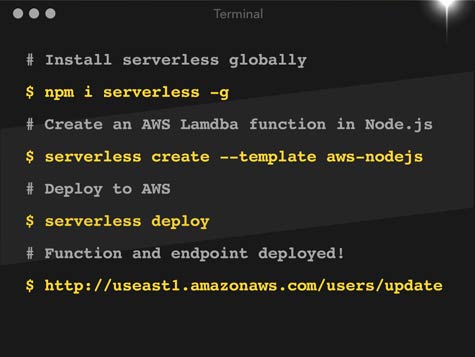Serverless computing is a new form of cloud computing that essentially allows developers to assume that the IT infrastructure resources available to them are infinite. Rather than having to wait for additional capacity to come online, serverless computing makes use of an event-driven architecture to dynamically make additional IT infrastructure resources instantly available. Servers are still required. It’s just that developers don’t necessarily have to be aware of their actual existence.
At the moment, Amazon Web Services (AWS) is the biggest advocate of serverless computing in the form of a Lambda service. To manage that Lambda service, Serverless, Inc., today made version 1.0 of its Serverless Framework generally available.
Serverless, Inc. CEO Austen Collins says the Serverless Framework provides the mechanism IT organizations needed to actually manage serverless IT infrastructure services in the cloud.
“Serverless computing is based on microservices platforms that use event-driven architectures,” says Collins. “It’s a much higher level of abstraction.”
Collins says it’s now only a matter of time before Microsoft, IBM and Google make similar serverless clouds generally available. As that occurs, Serverless, Inc., will expand its framework to give IT operations teams a common means for managing them all, says Collins.
It remains to be seen just what kind of impact serverless computing will have on enterprise IT. There’s no doubt that the usage of IT infrastructure in the cloud will become orders of magnitude more efficient. It may also make it simpler for IT organizations to dynamically deploy different classes of application workloads across different clouds, thereby forcing cloud service providers to compete more aggressively than they already do. The key, notes Collins, will be having a management framework in place that prevents IT organizations from becoming too deeply locked into the functional programming model of a particular serverless cloud architecture.
In the meantime, IT organizations need to be aware that there will soon be a plethora of models for invoking IT infrastructure resources in the cloud. It’s not clear at this point whether any one of them will dominate the others any time soon. As such, IT operations teams will more than likely need to come to terms with mastering them all.




